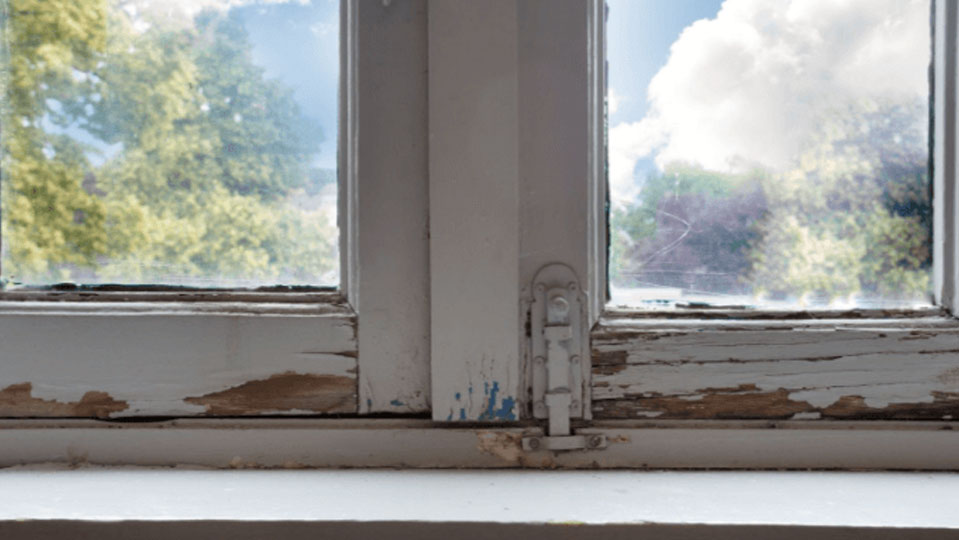Rotting Windows:
If you suspect that your windows are rotting, it’s important to address the issue promptly to prevent further damage and maintain the integrity of your home. Window rot can occur due to various factors, including moisture infiltration, prolonged exposure to the elements, and inadequate maintenance. Here are some signs that your windows may be rotting:
- Visible Decay: Look for signs of decay, such as soft or spongy wood, discolored or darkened areas, and visible mold or mildew growth. Rotting wood may also appear crumbly or powdery when touched.
- Peeling or Cracking Paint: Peeling or cracking paint on window frames or sills can indicate moisture damage and potential rot underneath the surface.
- Water Stains: Water stains on or around the window frame, walls, or adjacent surfaces may indicate water infiltration and rotting of the underlying wood.
- Difficulty Opening or Closing: Rotting windows may become difficult to operate due to warping or swelling of the wood. You may notice sticking, dragging, or misalignment of the window sashes when attempting to open or close them.
- Drafts and Energy Loss: Rotting windows can compromise the seal and insulation of your home, leading to drafts, air leaks, and increased energy bills.
If you suspect that your windows are rotting, here are some steps you can take to address the issue:
- Inspect the Windows: Conduct a thorough inspection of all your windows to identify signs of rot and water damage. Pay attention to areas where water may accumulate, such as the bottom of the window frame, sills, and corners.
- Repair or Replace Rotted Wood: Depending on the extent of the damage, you may be able to repair minor areas of rot by removing the decayed wood and filling the area with wood epoxy or filler. However, extensive rot may require window replacement or professional repairs.
- Improve Ventilation and Drainage: Ensure proper ventilation and drainage around your windows to prevent moisture buildup and reduce the risk of future rot. Keep gutters clean, repair any leaks or water damage promptly, and consider installing drip caps or flashing above windows to direct water away from the frame.
- Consider Window Replacement: If your windows are extensively rotted or beyond repair, replacing them with new, energy-efficient windows can improve the comfort, appearance, and value of your home. Choose windows with durable materials and proper flashing and sealing to minimize the risk of future rot.
- Consult with Professionals: If you’re unsure about the extent of the damage or the best course of action, consider consulting with a professional window contractor or home inspector. They can assess the condition of your windows, recommend appropriate repairs or replacements, and help you develop a plan to address the issue effectively.
Addressing window rot promptly can help prevent further damage to your home and ensure the long-term durability and performance of your windows.
TAKE ACTION AND CALL PHILLY STUCCO NOW FOR A PROFESSIONAL REFERRAL AND BEGIN YOUR HOME’S HEALING PROCESS!
PSRDW

